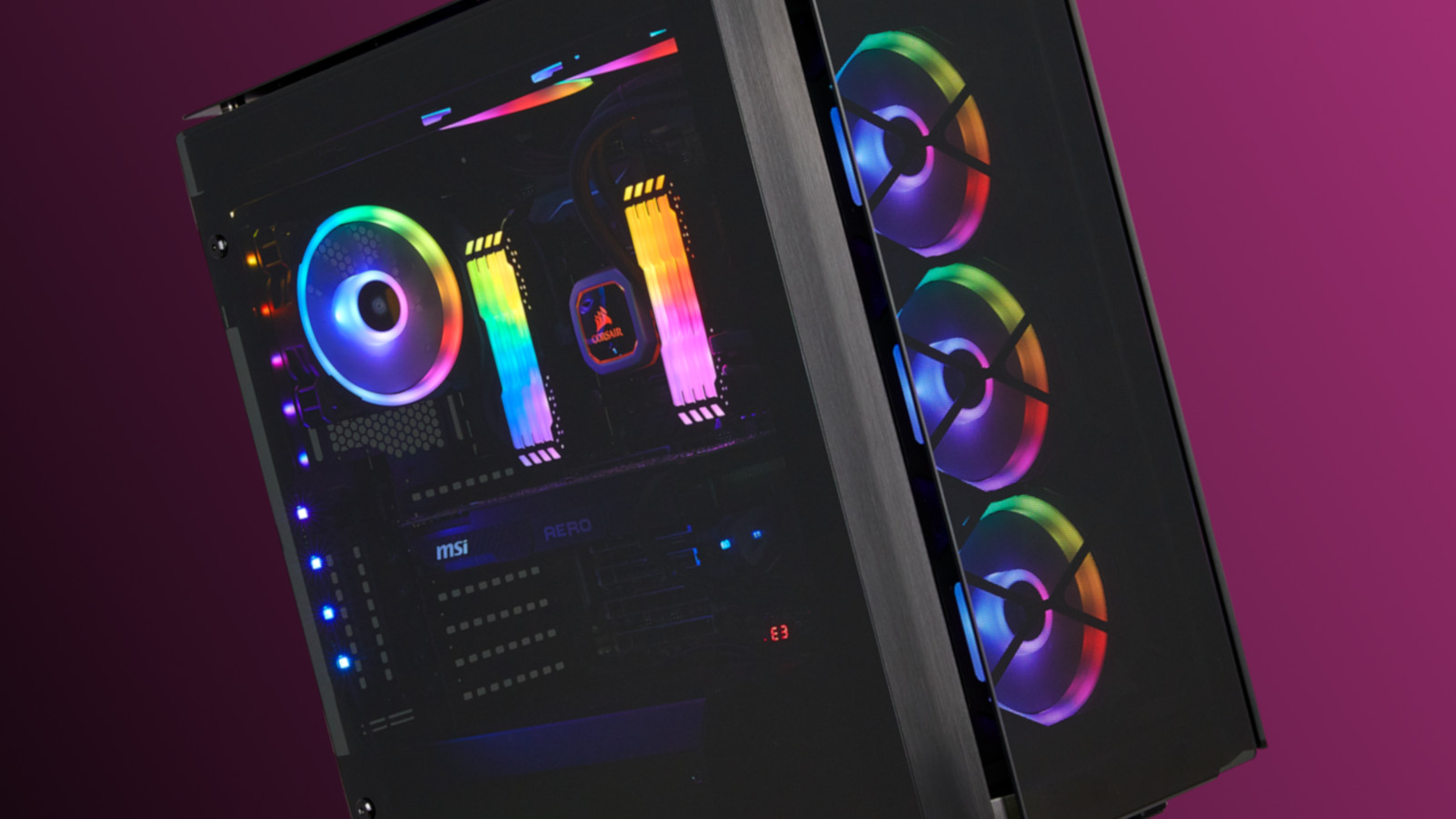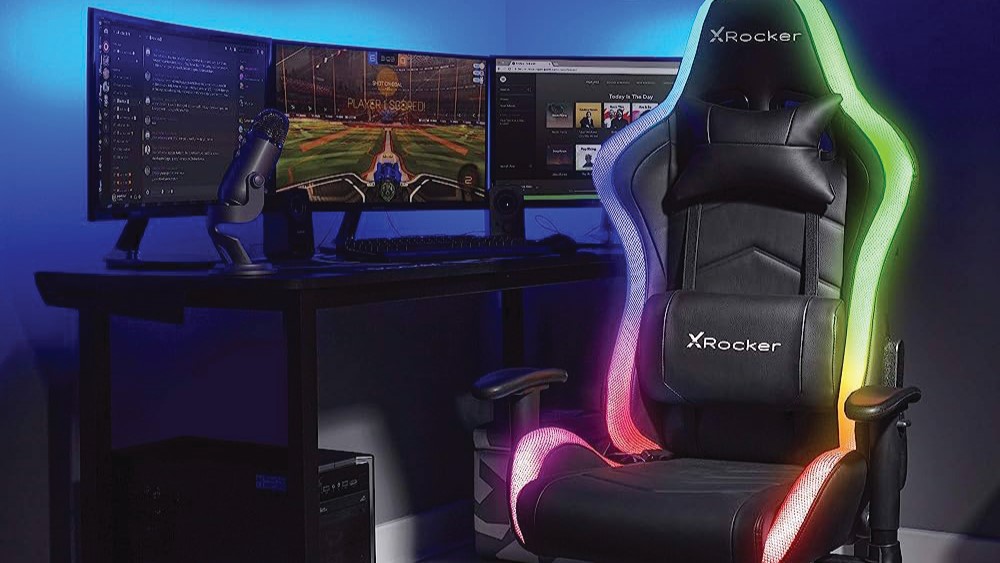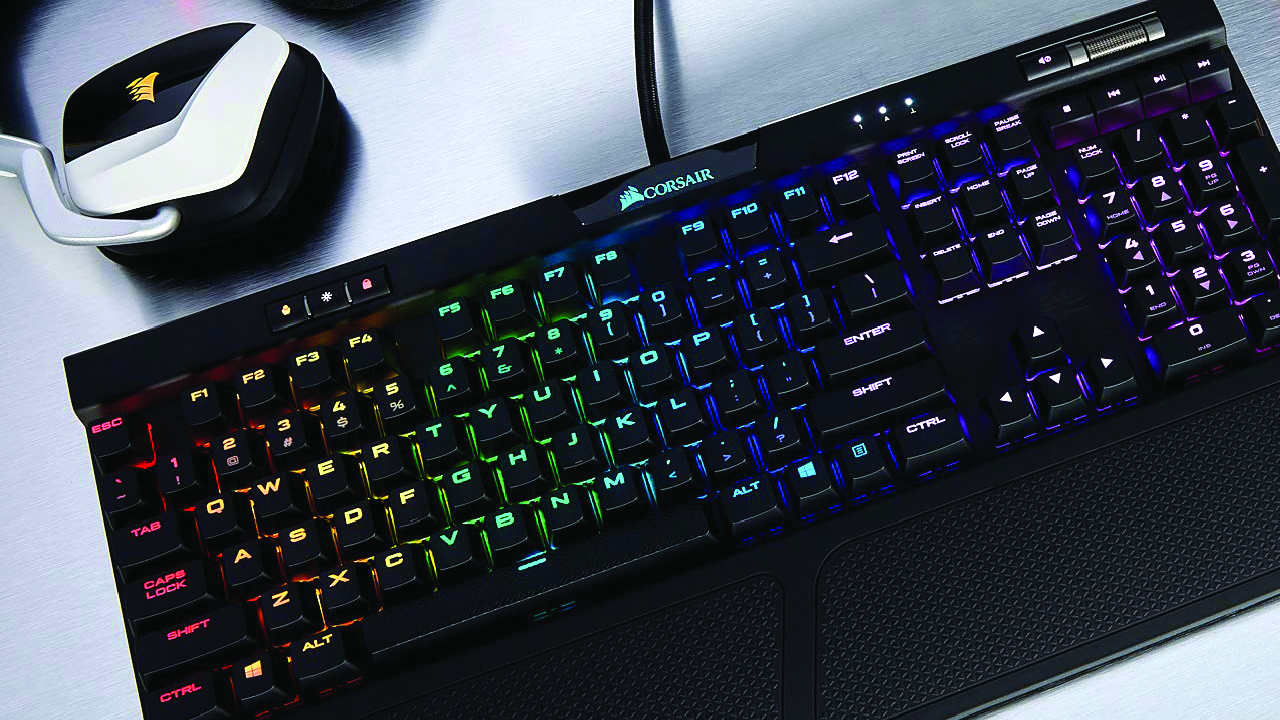The great rise and slight fall of the accidental RGB movement in gaming
It wasn't meant to go like this.

This article first appeared in PC Gamer magazine issue 387 in August, as part of our Tech Tales series. Every month we talk about the ups and downs of PC hardware, with a look back on our own history with the hobby.
So the legend goes, we have bad software to thank for the RGB revolution. When Corsair brought the first mechanical keyboard with individual RGB-backlit keys to market in 2014, its intention was to empower us with the ability to customise our layout in a manner that made sense for our games. I remember keyboards prior to this that differed in backlighting between WASD keys and the rest of the board, so that you could orient yourself for shooters at a moment's glance.
By making the whole keyboard customisable, the idea was that we could backlight certain keys in a more specific manner, colour-coding our MMO macros, RTS shortcuts and MOBA layouts. The thing is, it was actually quite tricky to do that, and to save those layouts as easily swappable layouts that we could load up for each game. So we just… didn't. We let that retina-melting rainbow RGB scheme that appears by default run riot. It was only ever intended to signal, "Hey! This thing's got RGB backlit keys all over the board, look!" Instead it became the blueprint for how all of PC gaming culture would look for the next decade.

That's just how fashion works sometimes. Were it not for our collective inability to visit hairdressers during 2020 and subsequent array of self-administered haircuts, would mullets and Zoomer perms have still have become vogue? Seems unlikely. Random chance and happy accident are two of the greatest designers who ever lived.
But there was more to RGB's rise. From the first time we all saw those Corsair boards, we recognised that this was where PC gaming seemed to have been heading for a while already. Now that it had arrived, it was an easy way for PC hardware marketers to convey additional value, and to deepen the consumer's bond with their product. It comes with lights now! Your old one doesn't have lights, does it? Oh, it does? Well can you set those lights with 16,777,216 colours? Well then: you need this new thing. And being able to customise a product, that's catnip for us. PC gaming's always had parallels with tuner cultures from the automotive world, so showing us twinkly lights that we could use to fashion a whole colour scheme was a masterstroke.
The moment we lost the war with RGB was probably when it started turning up on headsets as a matter of course. Headsets, which we wear on our heads, and therefore aren't visible to us while we're wearing them. If you're a streamer with an aesthetic to uphold, then fine: light up your ears. Otherwise: what are we all doing?
Personally, I always felt a bit infantilised by all the twinkly lights. I wasn't immune to RGB's hypnotic quality, but when I looked down at my own hands during evening gaming sessions and saw what looked like an aerial shot of Blackpool, I felt that this trend perhaps wasn't for me. But it wasn't until 2020 that I noticed a real rebellion forming. RGB microphones like Razer's Seiren and Thermaltake's $1,200 RGB desk were met with as many stern looks as outstretched fists of money. The anti-RGB movement had started.
Michael Ironside

Some system builders pounced on it. Ironside Computers, who ordinarily make PC builds that even the most RGBsceptic gamer would fawn over, recognised the appetite for blackout builds and thus released the 'Nightfall', their 'coal mine PC' in all-black (including black cooling liquid) and only the subtlest of white fan lights mounted on its top, just to show you how black the rest of it is.
The biggest gaming news, reviews and hardware deals
Keep up to date with the most important stories and the best deals, as picked by the PC Gamer team.
Top-level competitive players absolutely don't want flashing lights all over their setup.
The anti-RGB gamer's other great ally is the competitive player. As manufacturers buddied up to esports athletes for the marketing optics—'designed by the pros'—what they found was that top-level competitive players absolutely don't want flashing lights all over their setup. SteelSeries took those lessons to heart most effectively, carrying over design pointers from the mice it designed in collaboration with pros to the company's broader offering. In such a manner, the mighty Arctis 7s were born.
The blackout rebellion has since gained important territory back across headsets of all major manufacturers, and mice as well as mechanical gaming keyboards have dialled down the illuminations in recent years, too. SteelSeries has held firm on its lights out approach, and while Razer can't help but throw in some glowing zones they're less overt than they once were. Logitech carries over the competitive player's preference for non-RGB designs with the G Pro mouse, and you can see its influence on the latest G502s, too.
The genie won't go back in the bottle now, and we'll probably be sitting in gently oscillating lighting arrays for years yet. Importantly, though, vendors have listened to us once we got fatigued by RGB. By and large, it's used sparingly, sensibly, and in applications where it actually adds useability now. So thanks, Corsair Vengeance K70. I guess.
Phil 'the face' Iwaniuk used to work in magazines. Now he wanders the earth, stopping passers-by to tell them about PC games he remembers from 1998 until their polite smiles turn cold. He also makes ads. Veteran hardware smasher and game botherer of PC Format, Official PlayStation Magazine, PCGamesN, Guardian, Eurogamer, IGN, VG247, and What Gramophone? He won an award once, but he doesn't like to go on about it.
You can get rid of 'the face' bit if you like.
No -Ed.


